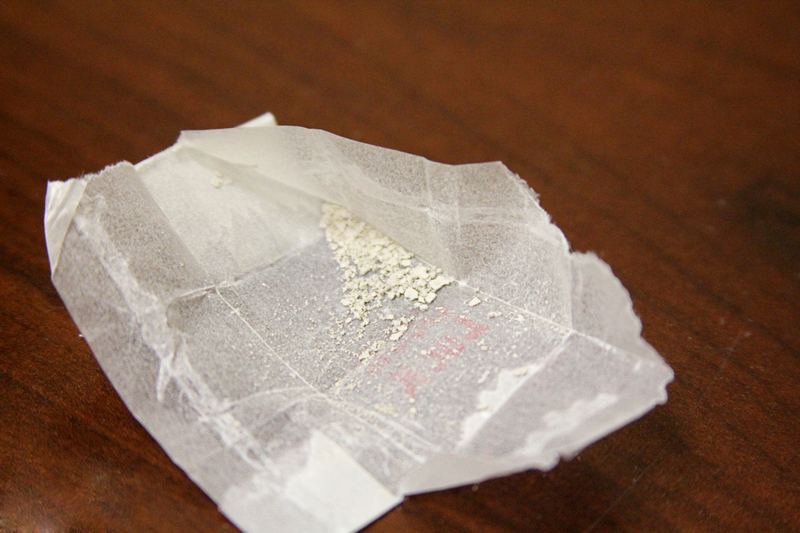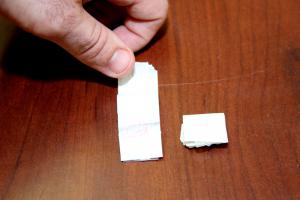When Georgetown Police Department responds to a call these days, it is probably going to be related to heroin.
Four out of five times anyway, estimates Lt. Lawrence Grose.
“Pretty much all we see now is heroin,” he said. “It's connected to burglaries, robberies, prostitution.”
Thirteen women charged with prostitution over the summer were all doing it to support habits, Grose said. Police receive calls from restaurants, convenience stores and businesses reporting stamp-sized, wax-paper baggies of heroin dropped on the floor by some unsuspecting user, Grose said.
From 2011 to 2013, Grose said, Georgetown's heroin arrests have tripled. “From 2013 to now it's probably doubled again,” he said.
Many calls are no longer simple possession or distribution charges. Across Sussex County, heroin is affecting more than users. Recent incidents highlight an increasing danger to innocent bystanders:
• On Sept. 30, a Dover man set his car on fire in the parking lot of the Route 1 McDonald's after he passed out from heroin behind the wheel and left his foot on the accelerator
• On Oct. 3, a Millsboro man on heroin drove into an oncoming police car on a two-lane road near Harbeson, causing an officer to swerve and run off the road
None of these cases resulted in injury to the suspects or anyone else, but these incidents illustrate the risks posed by users whose judgement is impaired, especially when they get behind the wheel of a vehicle, said Sgt. Paul Shavack, spokesman for the Delaware State Police.
“We saw some near tragedies in some of those, and fortunately those tragedies were averted,” he said.
Quick thinking by a passer-by during the car fire helped prevent further injuries, he said. “Luckily someone observed it and took action,” Shavack said.
As for the daycare incident, Master Cpl. Gary Founier said in an earlier interview that no children were exposed to heroin, and all were given clean bills of health by local healthcare providers. If any of the children had ingested the drug, he said, it could have killed them.
While these incidents drew exceptional attention, two more cases illustrate the growing threat that heroin users pose to public safety: a possession charge against a 22-year-old Laurel man found with 51 baggies of heroin and syringes at Trap Pond and possession and petty burglary charges against a 24-year-old Bethany Beach man who entered an Ocean View convenience store pretending to buy a 30-cent candy before grabbing money from the clerk and register. Police said they later found the suspect hiding in his mother's bathroom closet.
Chief Wayne Kline of state park enforcement said the Trap Pond incident was an isolated case; while there has been some drug activity in upstate parks, so far downstate parks have been immune, he said.
“It was a bit of an anomaly,” Kline said. “We all know heroin is a problem in Sussex County, but I'm hoping it's a single incident.”
Shavack said marijuana and cocaine remain more popular street drugs, but it's heroin that is driving drug users to commit other crimes, and those incidents are increasing.
“There is a clear nexus of crimes of opportunities,” he said. These include vehicle break-ins, burglaries and street robberies. “This is where the heroin user is seeking quick turn items such as cash, jewelry or electronics to cash in on for the next hit of heroin.”
Same cost, smaller bags
Two years ago, heroin hit the streets of Delaware filling a void left when new laws tightened up the prescription pill black market, making pills harder to find on the street and more expensive to buy. Today, use of the drug continues to increase.
From 2009 to 2011, heroin incidents hovered between 800 and 900 statewide. Those numbers rose to nearly 1,500 in 2012 and more than 2,500 in 2013. So far this year, there have been almost 2,200 heroin-related incidents, Shavack said.
The number of people charged in heroin-related crimes also increased sharply – heroin possession and possession with intent to deliver nearly doubled from 2011 to 2012 and again from 2012 to 2013.
Police say the cost of a hit of heroin has remained stable since 2012, but purchasers are getting less powder heroin in the already tiny bags. A baggie costs $5 to $10 in New Castle County, where it’s closer to the Philadelphia and Baltimore markets; the cost rises to $10 to $15 in Sussex County with transportation factored in, Shavack said.
Each baggie contained .025 grams in 2012; today they contain .015 grams.
Lighter packaging does not mean the purity is higher, says University of Maryland professor Jay Unick.
The purity of the drug ranges from 20 percent to 80 percent for the powder form, depending on the dealer, he said. Unick researches and writes primarily about Philadelphia where police say most of Delaware’s heroin comes from. That heroin is usually about 60 percent pure, Unick said.
Prices for heroin in the Mid-Atlantic region are lower than other regions of the country, Unick's research shows. He found that in 2008, Colombian producers expanded their cocaine empire into heroin production and by 2013 had pushed out the Asian market.
Just a year later, the Colombian dynamic has changed, Unick said.
Afghanistan heroin returns
Unick said his latest research shows Afghanistan heroin has made a comeback in the Mid-Atlantic market. Shavack also said Afghanistan and Mexico are supplying heroin to the Mid-Atlantic and Delaware.
“We’re seeing a surge of heroin coming through India, out of Afghanistan,” Unick said.
That, however, could change overnight in the volatile drug business of turf wars, politics and international unrest, he said.
Unick also said Mexico mostly produces a black tar heroin that is 20 percent pure heroin and predominately sold on the West Coast. While not pure, he said, the gooey tar heroin cannot be cut with other substances, so users know the purity of what they are buying.
That assurance is lost in the Mid-Atlantic market where any number of white substances can be added to the light brown to white heroin – anything from harmless baking soda or baby formula to noxious fentanyl, a component of the dangerous heroin that took the life of actor Phillip Seymour Hoffman earlier this year.
“You don’t know how many times it’s been stepped on,” said Georgetown’s Grose, referring to the street term of cutting the product.
The uncertainty of what a tiny bag of heroin contains can lead to accidental overdose.
“It’s hard to get an estimate on how pure heroin is,” Unick said. “The variability can get you in trouble.”
A user may be used to using heroin with 40 percent purity and then get some bags with 60 percent purity, which could cause them to go into respiratory failure and die, he said.
For many, the need to feed the habit trumps fear about purity.
“Once you get strung out on it, you need it just to function. Just to be normal,” says Georgetown’s Lt. Grose.
Melissa Steele is a staff writer covering the state Legislature, government and police. Her newspaper career spans more than 30 years and includes working for the Delaware State News, Burlington County Times, The News Journal, Dover Post and Milford Beacon before coming to the Cape Gazette in 2012. Her work has received numerous awards, most notably a Pulitzer Prize-adjudicated investigative piece, and a runner-up for the MDDC James S. Keat Freedom of Information Award.



























































